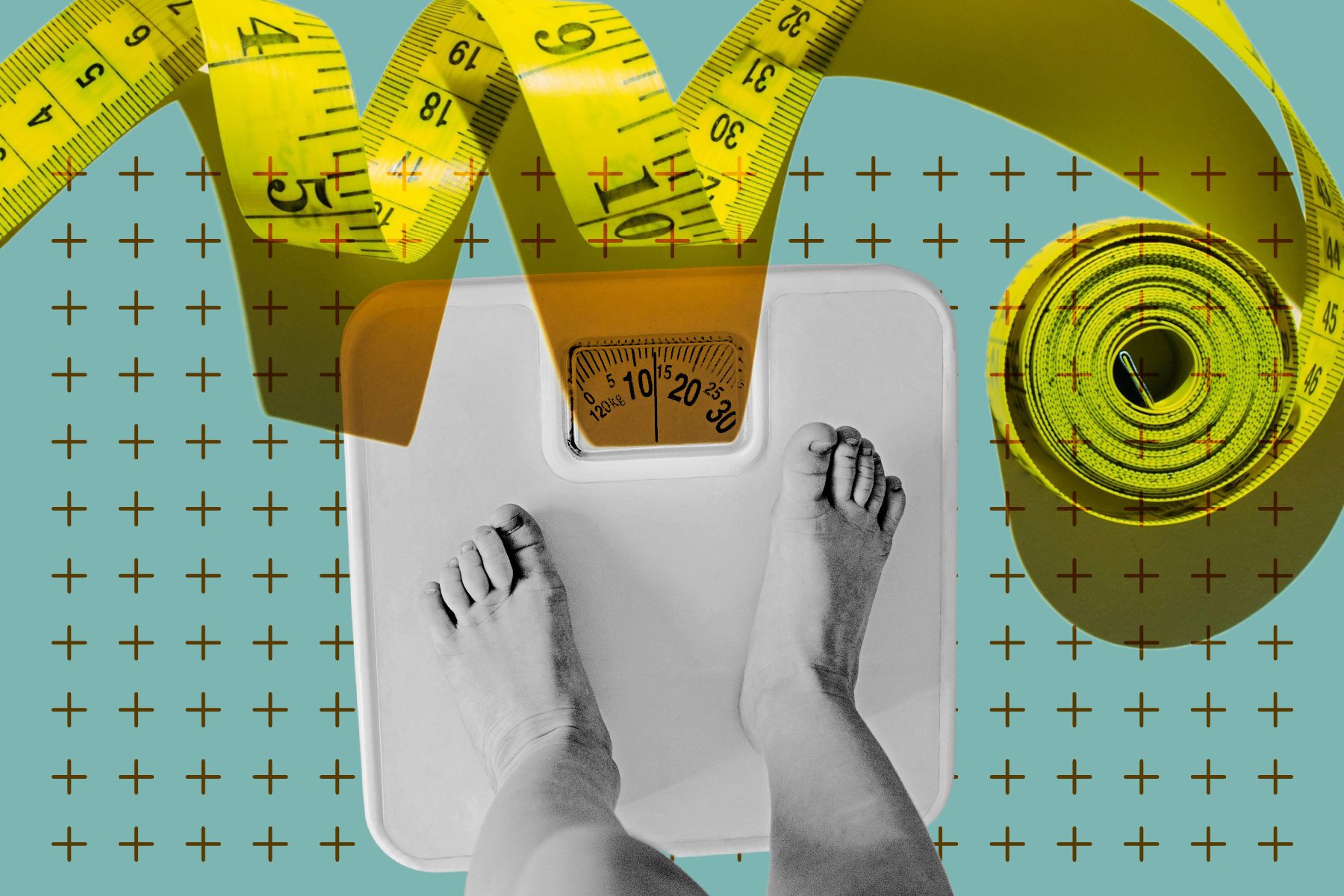Your trusted source for contextualizing the news. Sign up for our daily newsletter.
The American Academy of Pediatrics (AAP) released new clinical guidelines on evaluating and treating “obesity” in children, the first issued in 15 years. The guidelines have prompted a host of questions from experts on children’s general health versus the long-term effects weight stigma has on kids. That means taking into account how words like “overweight” and “obese” themselves could hurt children not just today, but in the future.
Some experts fear that the guidelines themselves might inadvertently further perpetuate weight stigma — something that a robust body of research has shown to be seriously detrimental not only to kids’ mental health, but long-term physical health, too. With a focus on intensely invasive means of “treating” obesity, some experts fear that reinforcing a social framework that stresses that a child’s body size is something to be “fixed” could cause serious lifelong problems for children of all body sizes. It’s why many of these experts hope that in light of the new guidelines, a meaningful conversation about the impact of weight stigma on kids can happen first.
“I was quite disappointed when I saw the new guidelines published because of the heavy nod at suggesting that we come down harder on helping kids lose weight and change their bodies versus incorporating the reality of weight-based bias and how this impacts kids’ mental health,” said Nichole Kelly, an associate professor at the University of Oregon and the director of the Researching Eating and Nutrition to Enhance Wellness (RENEW) Lab, where she studies eating behaviors, body image beliefs, weight stigma and chronic disease risk. “People used to think that biological changes from weight gain increase people’s risk of depression, but when we actually consider weight-based discrimination in our analyses, the research shows that weight stigma more robustly accounts for the changes we see in kids’ mental health.”
The guidelines ultimately recommend treating kids through “intensive health behavior and lifestyle treatment.” For many, this will involve intensive in-person behavioral treatment that takes place over several months and up to one year. But for children at the highest weights, they recommend that physicians offer adolescents ages 12 years and older weight loss medications and adolescents ages 13 and older with severe obesity evaluation for metabolic and bariatric surgery.
The academy report notes that 14.4 million children and adolescents are affected by obesity and that relative to adults at lower body weights, adults at higher body weights have an increased risk for health risks including higher cholesterol, Type 2 diabetes, coronary heart disease, stroke, gallbladder disease, osteoarthritis, cancer and overall mortality. The report cites the realities of long-term health inequities and calls out the way that racism can impact health outcomes, including the correlation between everyday racism experiences and obesity prevalence.
But having conversations about weight and health with children can be fraught, especially for girls, who disproportionately feel the effects of weight stigma as they internalize messaging from their peers and from their consumption of media at a point in their lives where they are forming their sense of self. The writers explicitly mention the way that weight bias and stigma can contribute to negative mental health outcomes, and the way that pediatricians have historically often been a source of weight bias experienced by pediatric patients.
One of Kelly’s biggest concerns with the new guidelines is the language used in them — primarily, the very use of the terms “overweight” and “obesity,” words that research has found to be some of “the most stigmatizing terms.” She noted that while the guidelines document advises that providers ask their patients how they prefer to talk about their own body, the fact that the document itself used the terms overweight and obese to categorize children’s bodies “encapsulates so much of the problem.”
“We can acknowledge that discrimination is real and problematic and not also perpetuate it simultaneously,” Kelly said. “It feels like one step forward and two steps back.”
Since the release of the new guidelines, the American Academy of Eating Disorders has submitted a formal request that mental health professionals be engaged to revise the guidelines, as none of the co-authors of the new guidelines come from mental health-related fields.
“When you look at the data on what’s predicting disease and mortality in people, factors related to mental health are much better predictors than BMI,” Kelly said.
It’s why experts are hoping for increased conversation and awareness about how conversations that stigmatize weight can affect children’s health.
“When kids are teased about their weight, made to be shamed, or bullied because of their weight, this increases their risk for a number of negative emotional and physical health consequences,” said Rebecca Puhl, the deputy director for the Rudd Center for Food Policy & Health at the University of Connecticut and an expert on policy strategies designed to reduce weight bias. Puhl’s research has found that when children have these kinds of experiences, they are then put at higher risk for developing depressive symptoms, anxiety, lower self-esteem and worsened body image. In adolescents, this can translate into higher rates of suicidal thoughts and substance abuse.
Kids who are weight shamed are more likely to turn to unhealthy eating behaviors like binge eating, emotional overeating, and the development of unhealthy weight control habits. Much of the bullying and teasing that young people experience about their weight frequently occurs during engagement in physical activity — like gym class at school or participation in extracurricular athletic activities. Puhl said that this frequently results in young people opting to avoid those kinds of settings, creating a barrier to physical activity, which helps promote long-term health.

When it comes to adolescents — particularly girls — facing weight stigma can become a predictive factor of unhealthy eating behaviors and weight gain even 15 years later, well into a person’s 30s, Puhl said. Her research has shown that weight-based bullying is one of the most prevalent forms of bullying in adolescents, with girls experiencing this form of bullying at higher rates than boys. On average, one-third of adolescent boys will report having experienced some form of weight-based bullying; in adolescent girls, that percentage jumps to one half.
Research has shown that bullying about weight happens to kids of all sizes and weights, though Puhl also notes that the risk of being bullied increases as a person’s BMI increases.
“As women, we are expected by society to look thin, and if we deviate in any way from that, we become instantly vulnerable to weight stigma that persists over time from childhood and throughout adulthood,” Puhl said.
Both boys and girls report experiencing emotional distress when they are stigmatized about their weight, Puhl’s research has shown, but girls report experiencing a higher level of intensity of emotional distress as a result. (The vast majority of research on weight stigma and children only categorizes children across a gender binary; researchers like Puhl and Kelly both acknowledge that there is a great deal of work to be done to diversify research done regarding children’s mental health and weight stigma, both in regards to gender and race.)
“They say it makes them feel sad or depressed or worse about themselves or feel bad about their bodies,” Puhl said, adding that where girls report experiencing this kind of stigma the most is at school, in their own homes, and on social media. “It’s really hard for girls to escape these messages in our current society today. Youth and adolescents are spending most of their time on their phones and this is damaging. They are receiving dangerous messages that their value is dependent on what they look like and what their bodies look like.”
Kelly noted that research showed that White women with larger bodies typically experience weight-based discrimination most frequently and are most negatively impacted by those experiences as a result of societal expectations tied to both gender and race. That said, Kelly added, White women are typically disproportionately featured in research on weight stigma than any other demographic; her lab is heavily focused on trying to create better data sets on the impacts of weight stigma by creating more representative research. As experiencing weight stigma in childhood is correlated with increased weight gain and higher BMI in adulthood, the experiences of girls during childhood can result in this kind of long-term discrimination as adults.
“There is the perception out there that White women are the only ones being really affected by weight-based discrimination, this idea that in some groups bigger bodies are thought of as beautiful and are more accepted. But our research suggests that none of that is true,” she said, adding that even in communities where there is greater acceptability for a wide range of body sizes, research still indicates a link between weight discrimination and mental and physical health difficulties.
-
More health coverage
- Transgender and nonbinary patients with eating disorders struggle to be seen. Many go untreated as a result.
- In the world of eating disorder treatment, Black people are often misunderstood, unheard — or left out altogether
- For young people on Medicare, a hysterectomy sometimes is more affordable than birth control
Puhl noted that researchers have found that “body size enters the equation” at increasingly early stages of child development; as young as preschool age, Puhl’s research has shown children already expressing “weight stereotypical attitudes.” In other words, 3-year-olds are describing their peers with higher body weight in more negative terms than they do their peers with lower body weight. It’s messaging that is prevalent in children’s media, Puhl said, but also even more common coming from parents, especially mothers.
“Moms are very prone to what we call ‘fat talk’: ‘I look fat in these pants.’ ‘These pants look way too tight on me.’ ‘Ugh, these clothes all look really bad on me.’ This communicates to a child very early on that their value is rooted in what they look like.”
By elementary school, Puhl said, research shows that girls start feeling bad about their bodies in ways that then continue for the rest of their lives. Puhl said that her research has shown that kids internalize the weight stigma they come against, blaming themselves for being teased about their weight, and then convincing themselves that the teasing will stop if they can then lose weight. Absent from the line of thinking is any belief or understanding that the way they are being treated by their peers is unfair, unjust or cruel. This internalized weight stigma, Puhl said, has the same kinds of consequences as that which is identified as coming from external factors: Kids find themselves dealing with the same kinds of heightened emotional distress and the development of unhealthy eating behaviors that result in feeling social weight stigma.
In her research lab, Kelly has been focusing her work on determining where targeted weight-based discrimination most commonly occurs and what can be done to help reduce that. One major first-step, she said, is educating parents, school professionals and those managing extracurricular sports programs on the ways in which BMI is not a meaningful indicator of a child’s health — and stressing that conversations about health focus on the nutritional benefits of foods like fruits and vegetables and not discussing diet in the context of weight.
This means explaining that talking about food in the context of weight loss or gain is harmful to kids’ mental health — and, by extension, to their physical health, too. Engaging parents and educators in these conversations is often not difficult, Kelly said, as “so many people have experienced weight-based discrimination themselves that it’s not a hard sell.”
She added that her outreach to community groups that work with health promotion in some way are largely already talking about health in a way decoupled from weight; she has found that the main arena where that correlation is still perpetuated is in medical practice and research. “Community groups now recognize that poverty and racism are much more impactful factors underlying all of these mental and physical health disparities we are seeing. Weight-based discrimination is just another part of that.”
Kelly’s lab has conducted a number of community workshops on health reeducation — including explanations on why it is important to decouple BMI from our understanding of health. One of the main focuses of these workshops is understanding that one of the primary biases that underlies weight-based discrimination is the belief that people are completely responsible for their own weight and that exercising more and eating less will always lead directly to weight loss. “This isn’t true,” she said. Education on the individual factors and behaviors that can determine why one person may gain weight or have a smaller body is key, she said. This includes acknowledgement of social determinants of health like community access to healthy foods, individual and community stress, and discrimination — all better factors of predicting future instances of disease than BMI.

Puhl said that another crucial step in combating weight stigma and its impacts on children’s mental and physical health is by communicating how much parents can play a key role in developing this stigma in their kids.
“As parents, we want to talk in ways that communicate that we have respect for diverse body sizes and modeling healthy self-esteem in front of our kids,” Puhl said. “We need to be verbalizing positive messages about our own bodies and those of others, and pointing out individuals of different sizes who are successful, kind, athletic, empathetic, and leaders in our communities.”
Just as important, though, is also being aware as a parent that concern about a child’s weight can result in negative outcomes. “A lot of parents who are worried about a child’s weight, especially when that child is higher weight, regularly comment on their child’s weight and food choices — and we know from research that that backfires,” Puhl said. Talking about a child’s weight and diet — to the child or in front of them while asking questions even trying to vet whether concern is warranted with a healthcare provider — can yield the kind of weight stigma that has long-term negative health outcomes for children. “All parents want their children to be healthy, but that’s more likely to happen if parents model what healthy food choices look like and let kids make those healthy choices for themselves,” Puhl said.
She adds that specifically talking about food at home in the context of weight loss or weight gain can be especially damaging to young people, increasing their risk of psychological distress and disordered eating. “We can talk about foods’ nutritional value regardless of body size, and too often that message is lost,” Puhl said.
She added: “Sometimes our society views weight stigma as justifiable because people think it will motivate people to lose weight, but we actually see the opposite in research. Facing weight stigma predicts increased weight gain over time.” Puhl said.
But it isn’t just the reality of weight stigma causing weight gain that’s the issue.
“Stigma is wrong on many levels — it is unfair and unjust and harmful, but it’s also a public health issue. Weight stigma by no means reduces levels of obesity. It is not an appropriate tool to promote health.”







